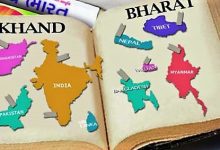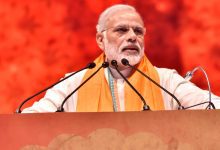Quizzically, PNB, a victim of the world’s biggest bank fraud ever, is out of RBI’s first prompt corrective action (PCA) list. The biggest global bank fraudster, Nirav Modi, who is also facing the trial of the US Department of Justice, is still out of the reach of Indian authorities. The question is: will PCA truly help these banks recover financially within a stipulated period? Or, will it drive small and medium sector borrowers to expensive private lenders? Here’s a report, for Different Truths.
Eleven out of 21 public sector banks are already under the Reserve Bank of India’s prompt corrective action (PCA). Left to the central bank, three to five more banks may join soon the framework. PCA generally restricts lending activities and network expansion of banks. The PCA framework will prevent the size of the loan books of these banks depending on the risk thresholds set in the rules. Banks under PCA are directed to disburse loans only to those companies whose borrowing is above investment grades. In extreme cases, RBI enforces these guidelines to ensure banks do not go bust and follow prompt measures to put their house in order.
The 11 public sector banks (PSBs) under PCA are Central Bank of India, IDBI Bank, Indian Overseas Bank, Corporation Bank, Bank of India, United Bank of India, Dena Bank, Bank of Maharashtra, UCO Bank, Oriental Bank of Commerce and Allahabad Bank. Now, three more banks — Punjab National Bank (PNB), Canara Bank and Union Bank of India — may be added to the list.
Quizzically, PNB, a victim of the world’s biggest bank fraud ever, is out of RBI’s first PCA list. The biggest global bank fraudster, Nirav Modi, who is also facing the trial of the US Department of Justice, is still out of the reach of Indian authorities. Non-resident Indian Modi is happily making media statements from outside the country, challenging government actions. Modi has upstaged even former Malaysian Prime Minister Najib Razak in bank fraud.
The question is: will PCA truly help these banks recover financially within a stipulated period? Or, will it drive small and medium sector borrowers to expensive private lenders? Some may have to put even their shutters down. There is serious doubt about PCA’s success in recovering stressed bank assets. In fact, the RBI action may put these PSBs in further distress. Ordinary and small borrowers are bound to suffer under PCA restrictions. Banks will become choosier. Did RBI consult the government, principal owner of PSBs, before clamping PCA on them? Unlikely.
The RBI action seems to have put the government in an awkward situation. The RBI’s first PCA notice came within months after the central government had allocated capital of Rs 52,311 crore to 11 “weak banks” to maintain their minimum capital requirement. Apart from this, the government also infused Rs 35,828 crore in nine “strong banks”. The banks under PCA stressed on further capital infusion to come out of the situation and maintain adequate regulatory capital by the end of this financial year. The money received in the previous round was sufficient to take care of their capital requirements, last year.
Piyush Goyal, the stop-gap finance minister in the place of Arun Jaitley, recovering after an operation, met the chief executives of the 11 PSBs under PCA, last week, to take stock of the situation. Reports suggest that the government may now ask RBI to consider revising the PCA framework so that a complete restriction on fresh lending does not affect credit flow to business, particularly small and medium enterprises. Officials of the department of financial services also held one-on-one meetings with the bank executives to take stock of their plans. A banker said RBI has put a complete lending ban on Dena Bank. RBI also restricted lending to risky assets and raising high-cost deposits for Allahabad Bank after further deterioration in their performance in 2017-18. This may impact the credit to the small industries.
Goyal said, “The RBI has set some parameters for banks to come out of PCA. That’s a long process…Banks need to show profitability for two years. But to strengthen the banks and ensure that micro, small and medium enterprises industry keep getting adequate working capital and loan so that their business is run smoothly, we held fruitful discussions,” The minister said the Centre will give every possible support to help the banks come out of the PCA framework as quickly as possible. Under the PCA framework, banks also face severe restrictions for breaching various levels, including the curb on dividend distribution, branch expansion, and management compensation. In a worst-case scenario, the RBI may ask a weak bank to merge with others or wind up.
However, while banks are getting penalised for the massive non-performing asset (NPA) build-up, the public is yet to see that those fraudsters responsible for the financial stress of these majority state-owned banks are booked and penalised. Many of them, all NRIs, are living freely outside the country. Until 2015, former Malaysia PM Najib Rajak was thought to be the biggest banking fraudster, allegedly siphoning out over RM2.67 billion (US$700 million) from state-owned 1Malaysia Development Berhad (1MDB). A US Department of justice report alleged that the money helped the former Malaysia PM purchase luxury apartments in Manhattan, mansions in Los Angeles, paintings by Monet, a corporate jet, and even financed a major Hollywood movie. It sounds almost like the stories printed in the Indian media about liquor baron Vijay Mallya’ s high lifestyle until 2013.
Data released by the RBI in March revealed that during the first nine-months of 2016-17, 455 cases of fraudulent transactions of Rs 100,000 and above were detected at ICICI Bank, 429 at SBI, 244 at Standard Chartered Bank and 237 at HDFC Bank. It said 64 SBI employees, 49 HDFC Bank and 35 Axis Bank employees were involved in facilitating these transactions. SBI is at the forefront of a Rs.8241.5-million bank fraud involving Kanishk Gold. During April- December 2016, a total of 3,870 fraudulent cases were reported involving Rs 177.50 billion, which were facilitated by 450 private and public sector employees. The public and bank customers would be interested to know the background of these employees, the positions they occupied in those banks and what actions are taken against them. Rising bank frauds are becoming a matter of serious public concern.
Nantoo Banerjee
©IPA Service
Photo from the Internet





 By
By

 By
By
 By
By